Deadly Istanbul bombing took place near landmarks popular with tourists
- Share via
Sultan Ahmet Square in Istanbul, target of the bombing that killed at least 10 people Tuesday, has a history that goes back at least 17 centuries, predating the city’s days as capital of the Byzantine Empire.
Also known now as Sultanahmet Meydani, the site was built by the Roman Empire in the 4th century AD as a venue for chariot races, also known as a hippodrome. Over centuries, the site evolved, growing busier, then falling idle. By the 15th century, it was a ruin.
But today it ranks among the city’s most popular sites with tourists. A green space shaded by many trees, the square is neighbored by the Blue Mosque, the Hagia Sophia Museum and, within about 500 feet, a Four Seasons hotel. Within a quarter-mile stands Istanbul’s Grand Bazaar.
In a 2014 video on Istanbul, travel guru Rick Steves stands in the middle of the square, explaining how the hippodrome once seated more than 60,000 race fans. Among the square’s features -- a stone’s throw from the site of the explosion -- is a 3,500-year-old inscribed obelisk, imported by the Romans from Egypt.
Here’s a look at a few key landmarks near the bombing:
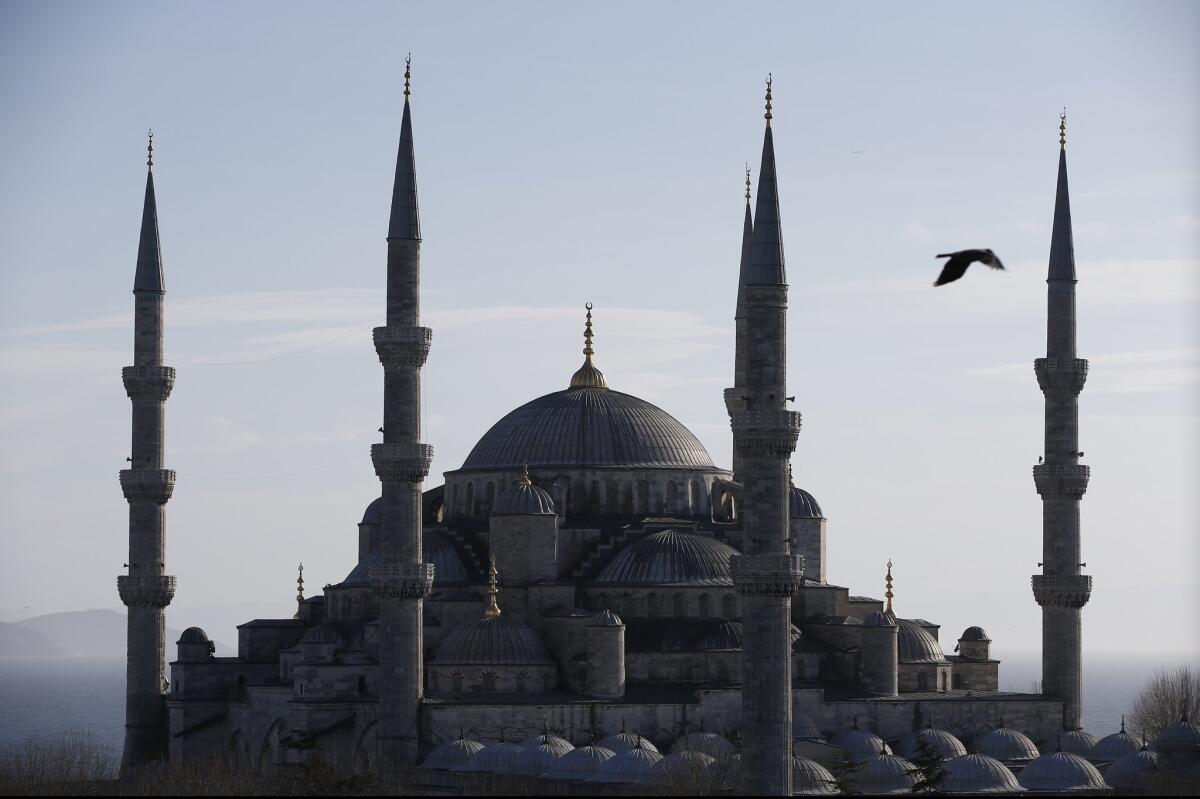
Blue Mosque
Blue Mosque
The Sultan Ahmed Mosque, known as the Blue Mosque, is in the historic and heavily touristed Sultanahmet district of Istanbul, close to the deadly bombing in Sultanahmet Square.
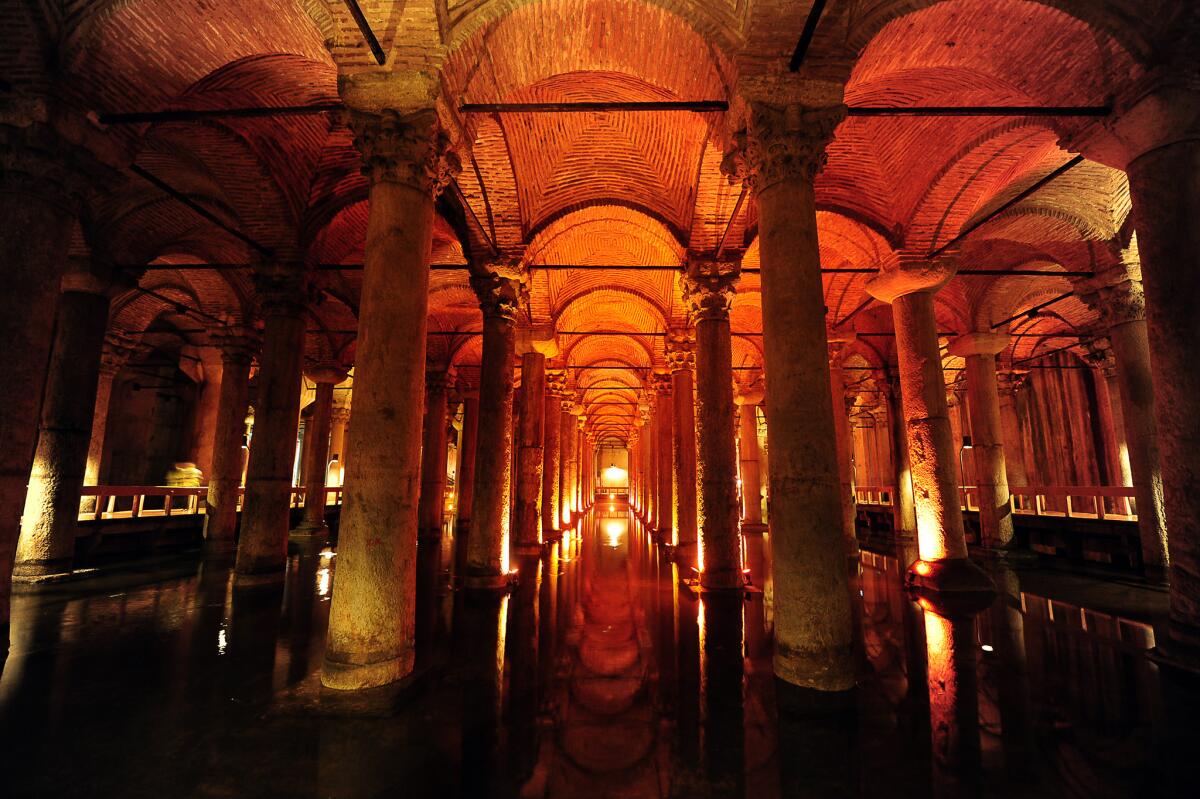
Basilica Cistern
Basilica Cistern
The 6th century Byzantine Basilica Cistern in Istanbul, Turkey, is close to the site of a deadly bombing.
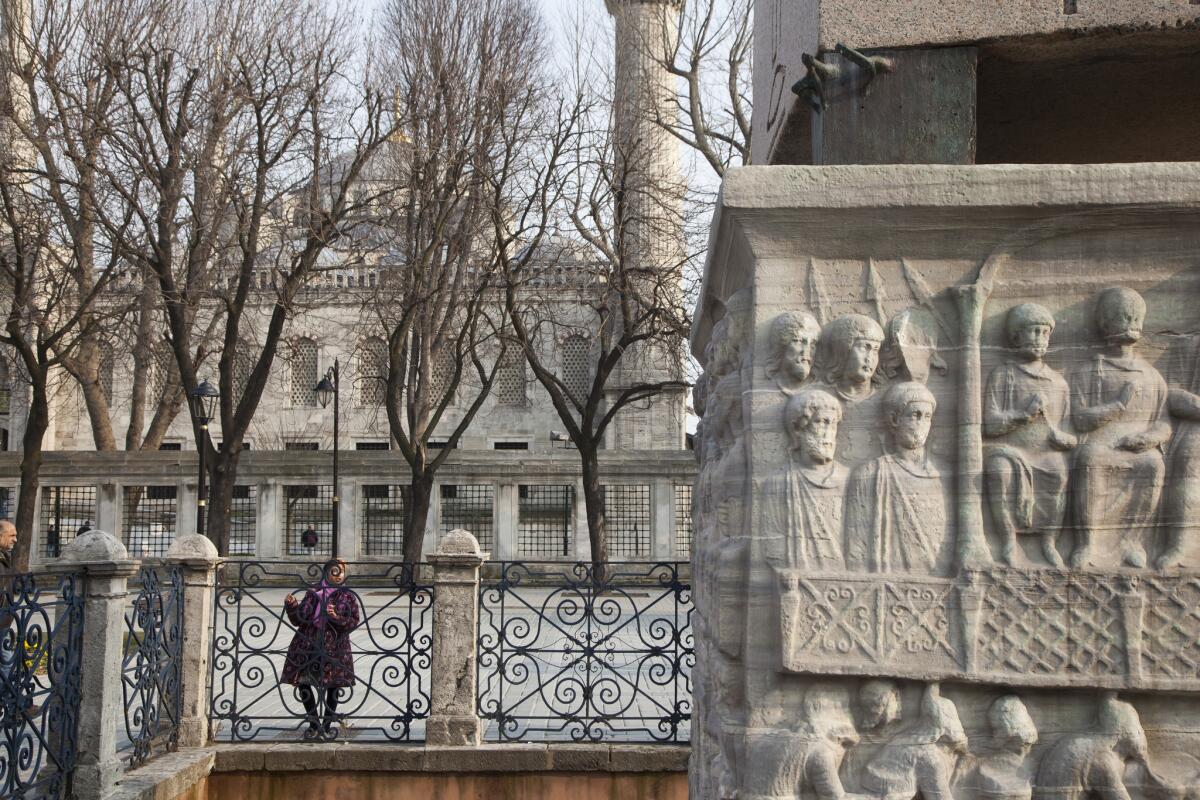
Obelisk in Istanbul
Obelisk in Istanbul
The ancient Egyptian Obelisk of Theodosius near the Blue Mosque in the Sultanahmet area of Istanbul.
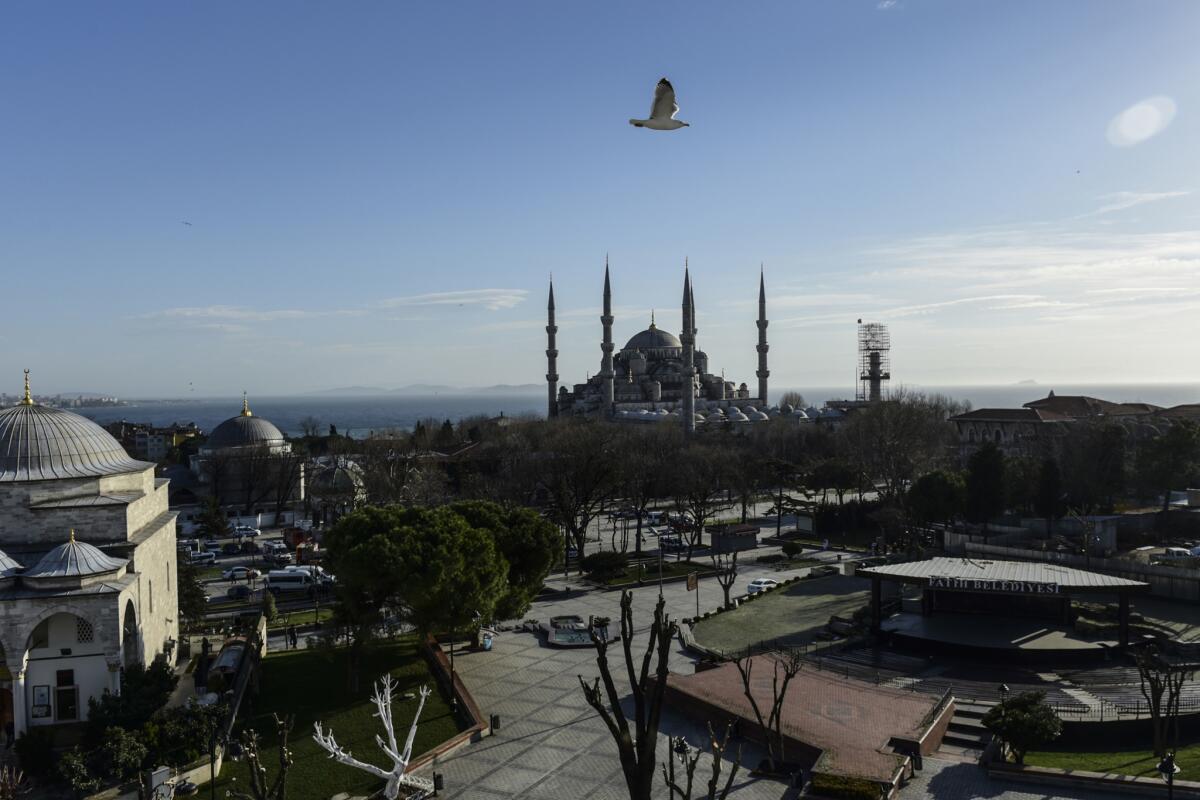
Sultanahmet square
Sultanahmet Square
The Blue Mosque and the Sultanahmet Square in Istanbul’s tourist hub.
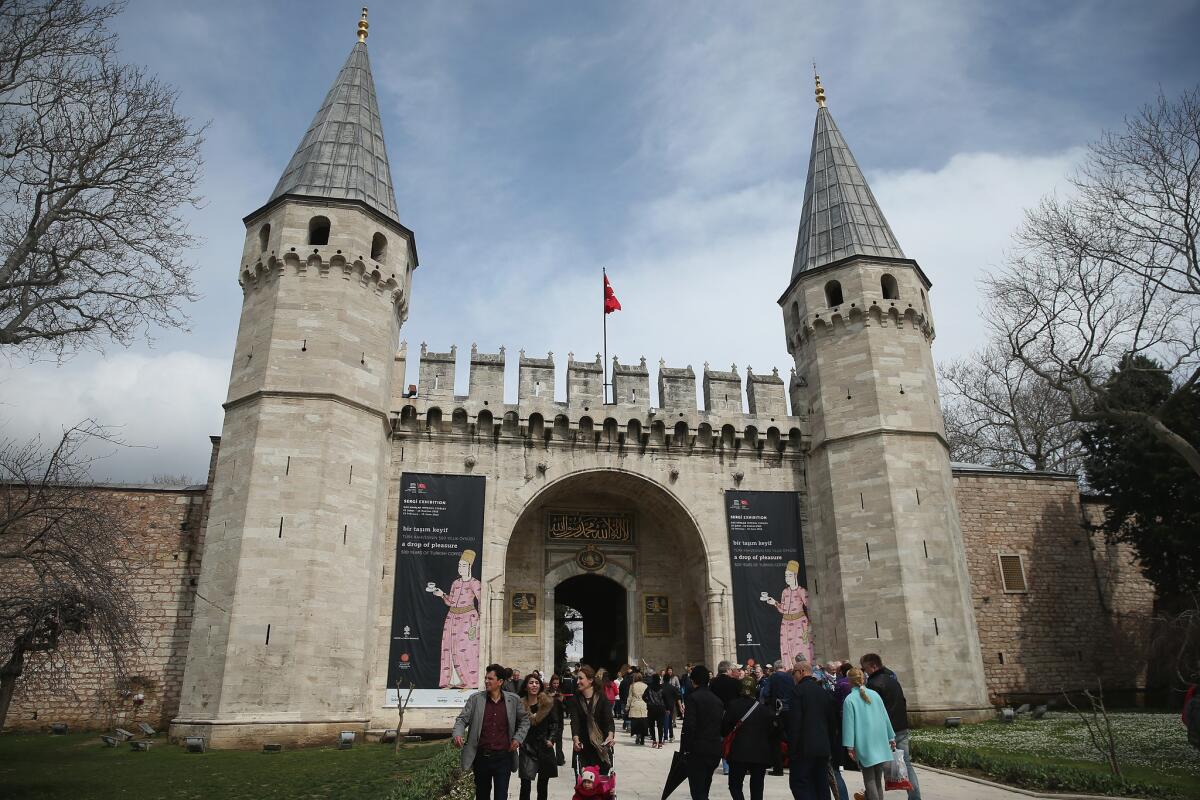
Topkapi Palace
Topkapi Palace
Above: The main entrance gate at Topkapi Palace in Istanbul, blocks from a deadly suicide bombing. Below: The private apartments of the Ottoman Sultan at Topkapi Palace.
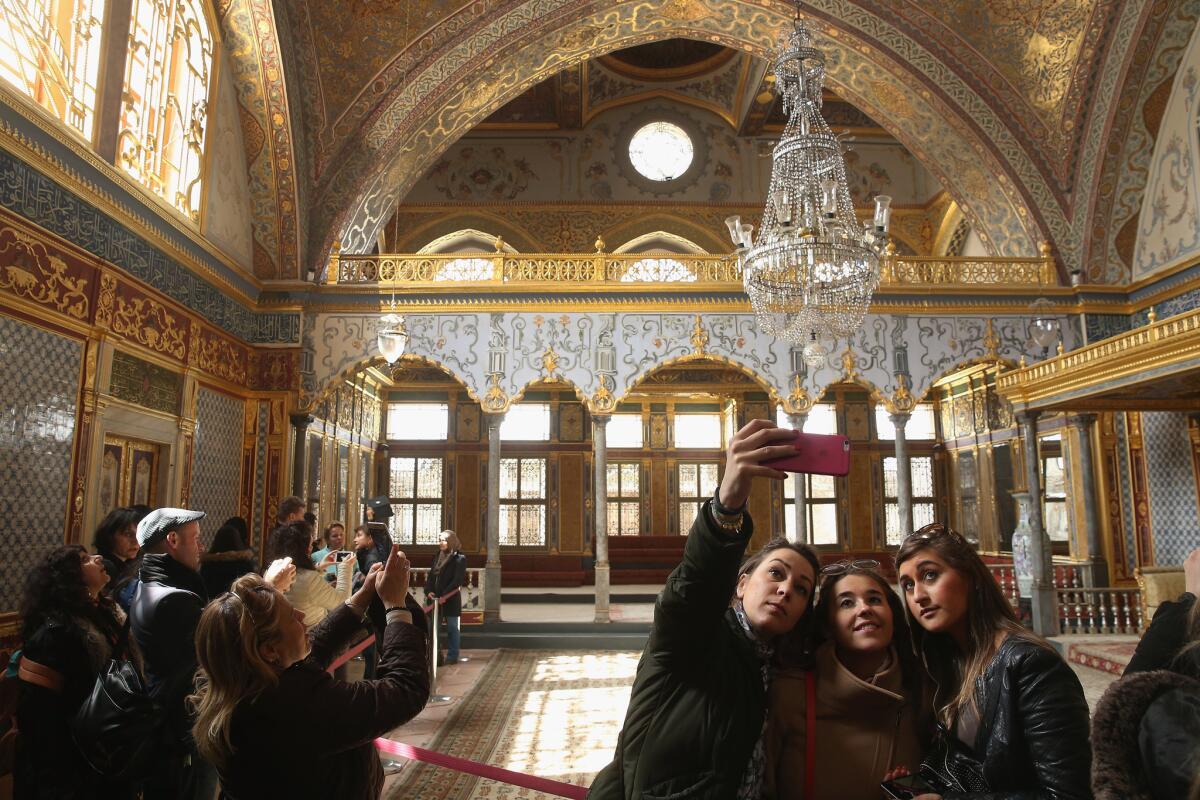
Topkapi Palace
More to Read
Sign up for Essential California
The most important California stories and recommendations in your inbox every morning.
You may occasionally receive promotional content from the Los Angeles Times.









